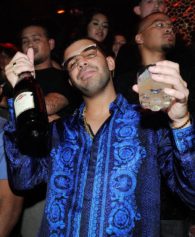Secret service agents flanked both sides of the vehicle. A crowd of reporters snaked behind a rope about 20 feet away. Camera flashes documented every possible angle of the meeting taking place.
It was a strange setting for a private conversation.
But sitting alone inside a 2013 Chevy Malibu, President Obama and Ed Welburn had just that last February during the Washington Auto Show.
The conversation came at the end of a short tour, in which Welburn, the vice president of global design at General Motors, introduced the president to seven of the company’s latest vehicles, a lineup made possible by Obama’s fiscal bailout of the nation’s reeling auto industry only three years ago.
Inside the Malibu, Obama offered Welburn a candid assessment of all that had transpired in the meantime.
“He let me know how proud he was with the work that I do, and I was just like, ‘Wow,’” Welburn said. “At the very last vehicle, he did ask me, he just remarked that the design of GM cars has gotten so much better in the past few years.”
Their meeting was notable for obvious reasons, namely it was a very public connection between the president and a high-ranking auto industry executive at a time the federal auto bailout is under considerable scrutiny.
But it was notable for another reason, one unmentioned by the horde of reporters standing only 20 feet away, and perhaps one unnoticed by Obama and Welburn themselves. On the Jan. 31, the eve of Black History Month, the first African American president was meeting with the first African American to lead design at a car company; Welburn leads the biggest in the world.
Making history
Not that Welburn, 61, pays much attention to such designations.
Long before he rose over to become the highest-ranking African American executive in the domestic auto industry, and long before he was the industry’s first African American designer in 1972, he was just a kid obsessed with cars.
Growing up in suburban Philadelphia, his father owned an auto body shop that provided early inspiration. At age three, he pulled all the books off his mother’s bookshelf and drew sketches, simple ovals with wheels, on the blank pages. She wasn’t happy.
He built soapbox derby cars. As he got older, he was a neighborhood favorite: Kids flocked to his backyard, because he knew how to fix their bikes. He devoured car magazines. As a teenager, he drove a tow truck for a Chevrolet dealership.
But it was at age 10 that an experience at the 1960 Philadelphia Auto Show cemented the course of his life. Fifty years later, he vividly recalls the details at a moment’s notice…
Read More: Miranda, pragmaticobotsunite.com
